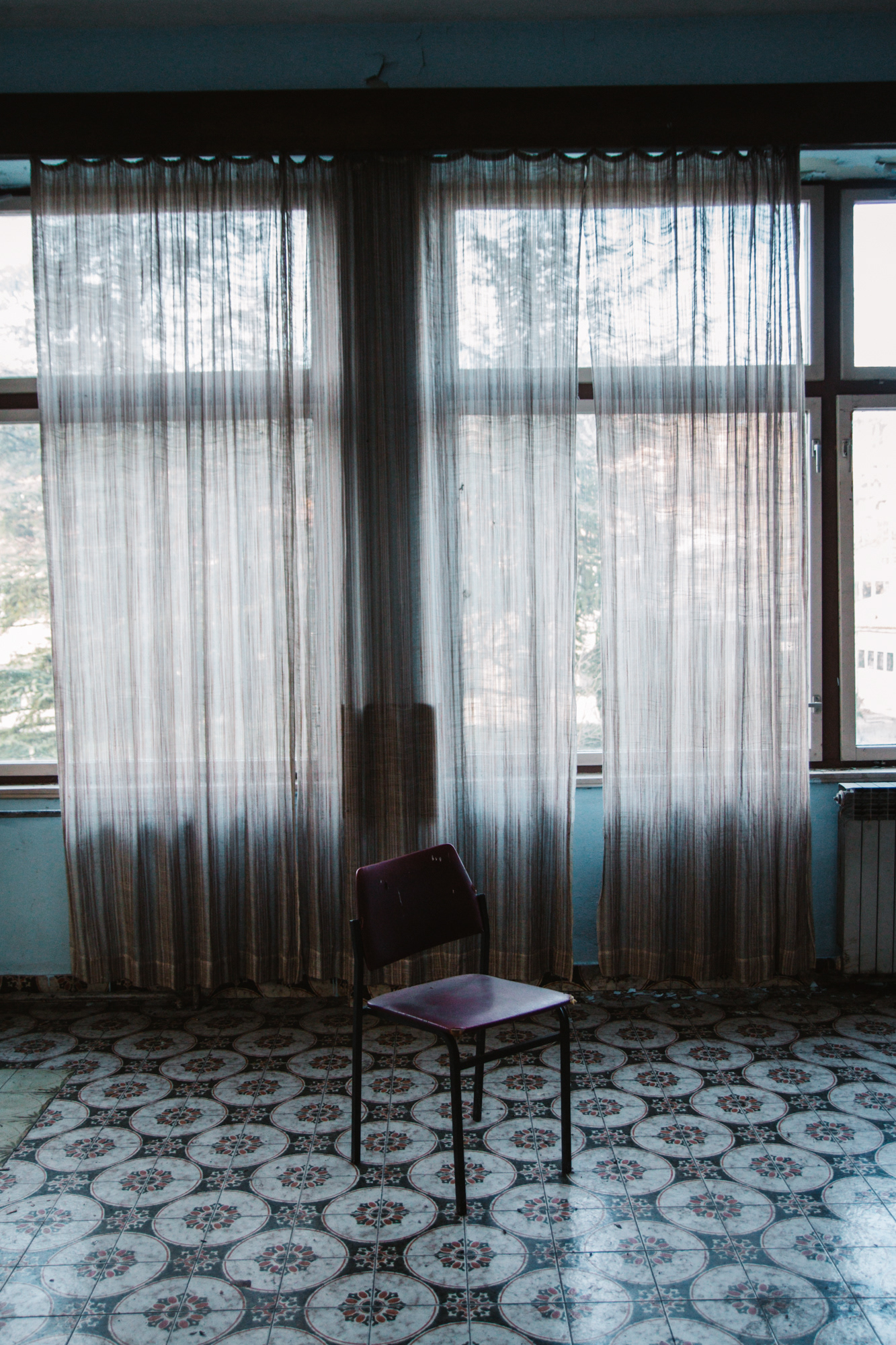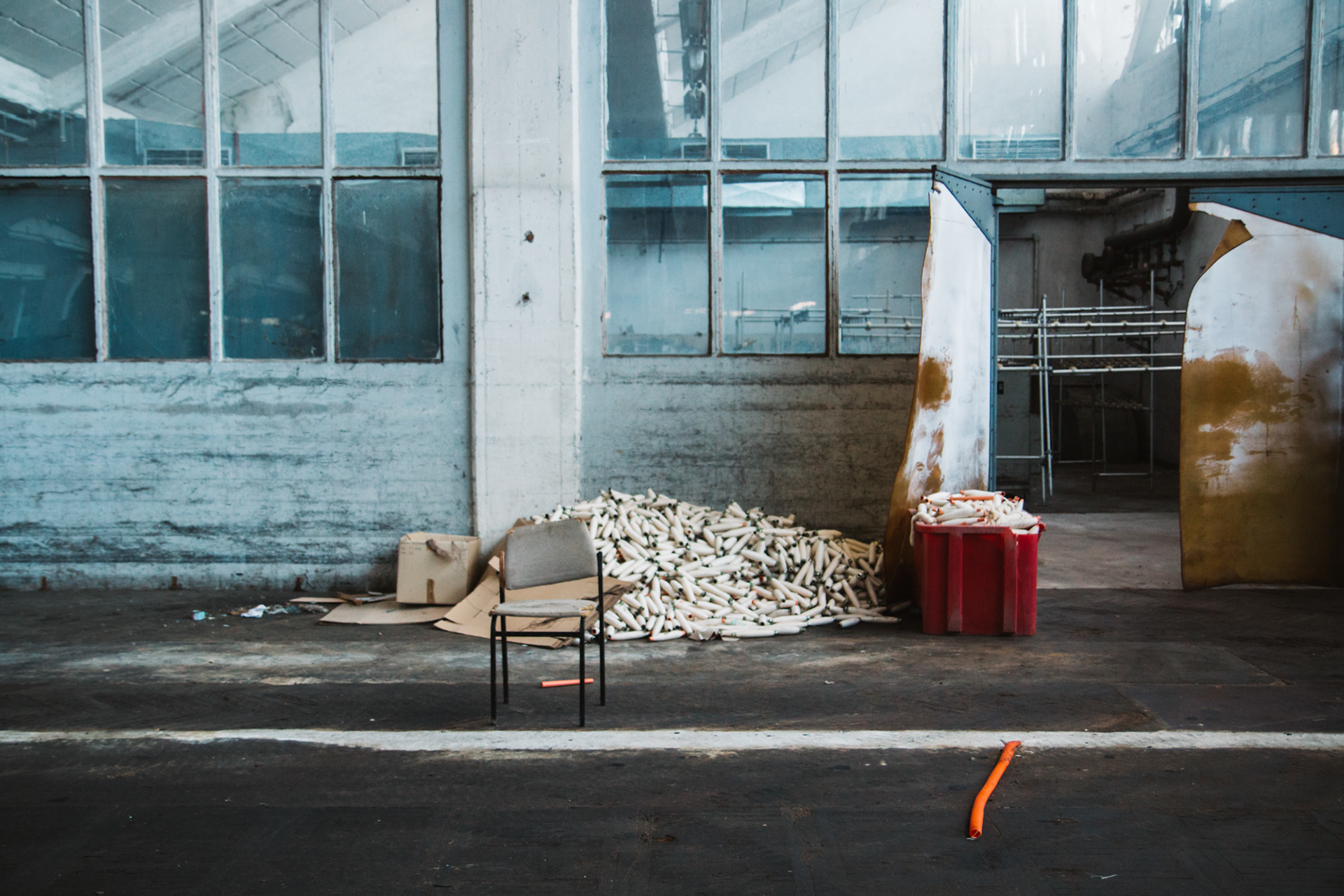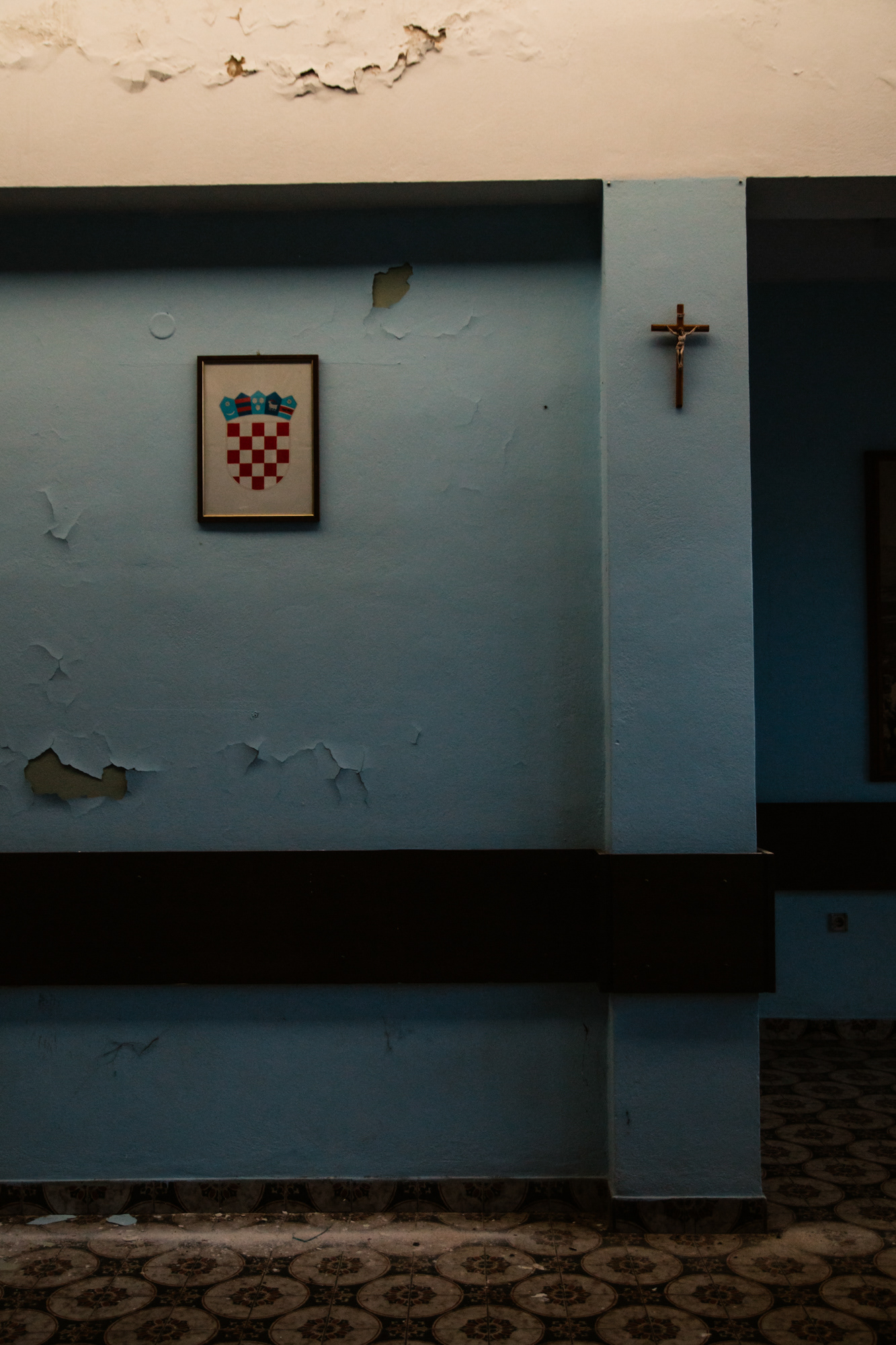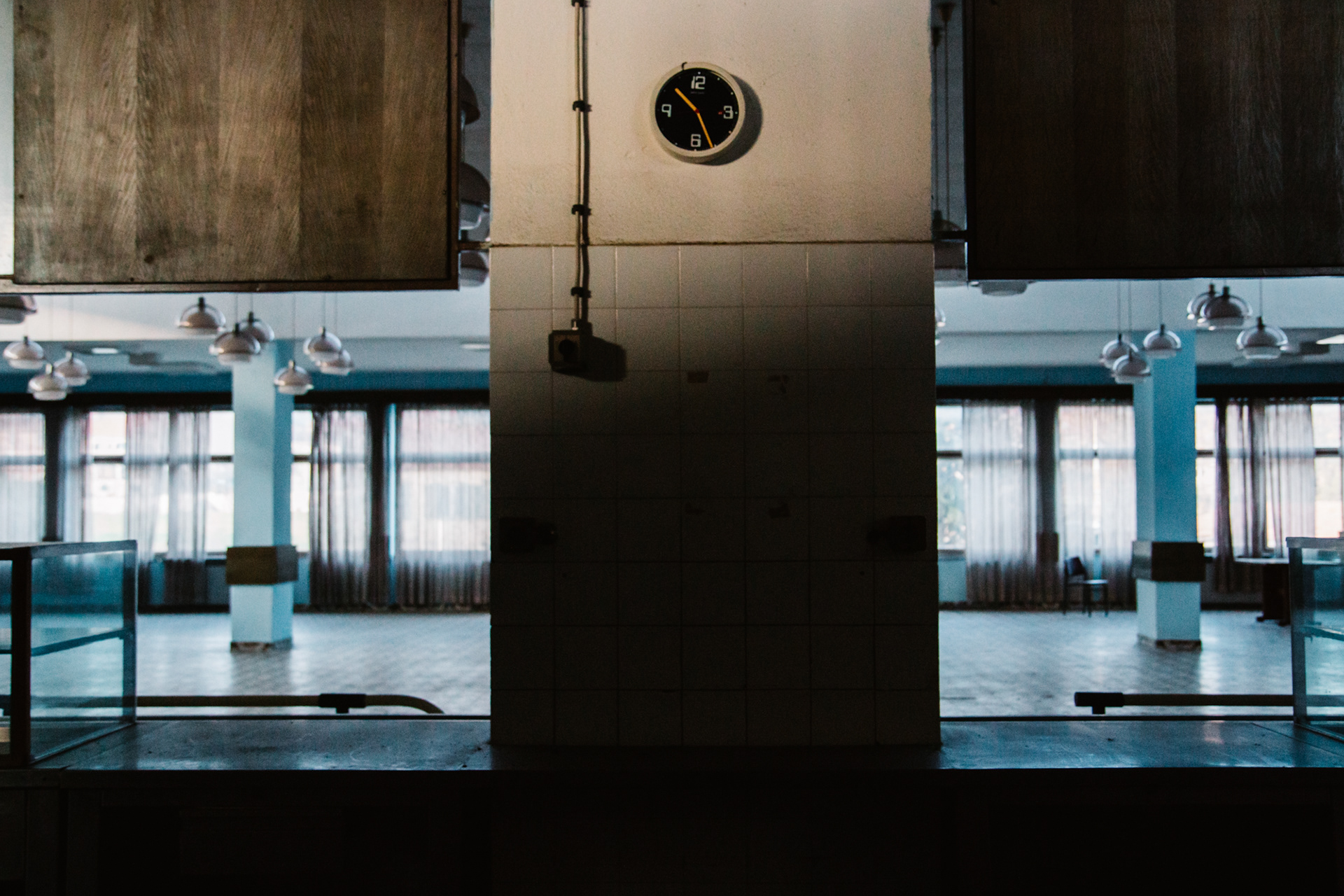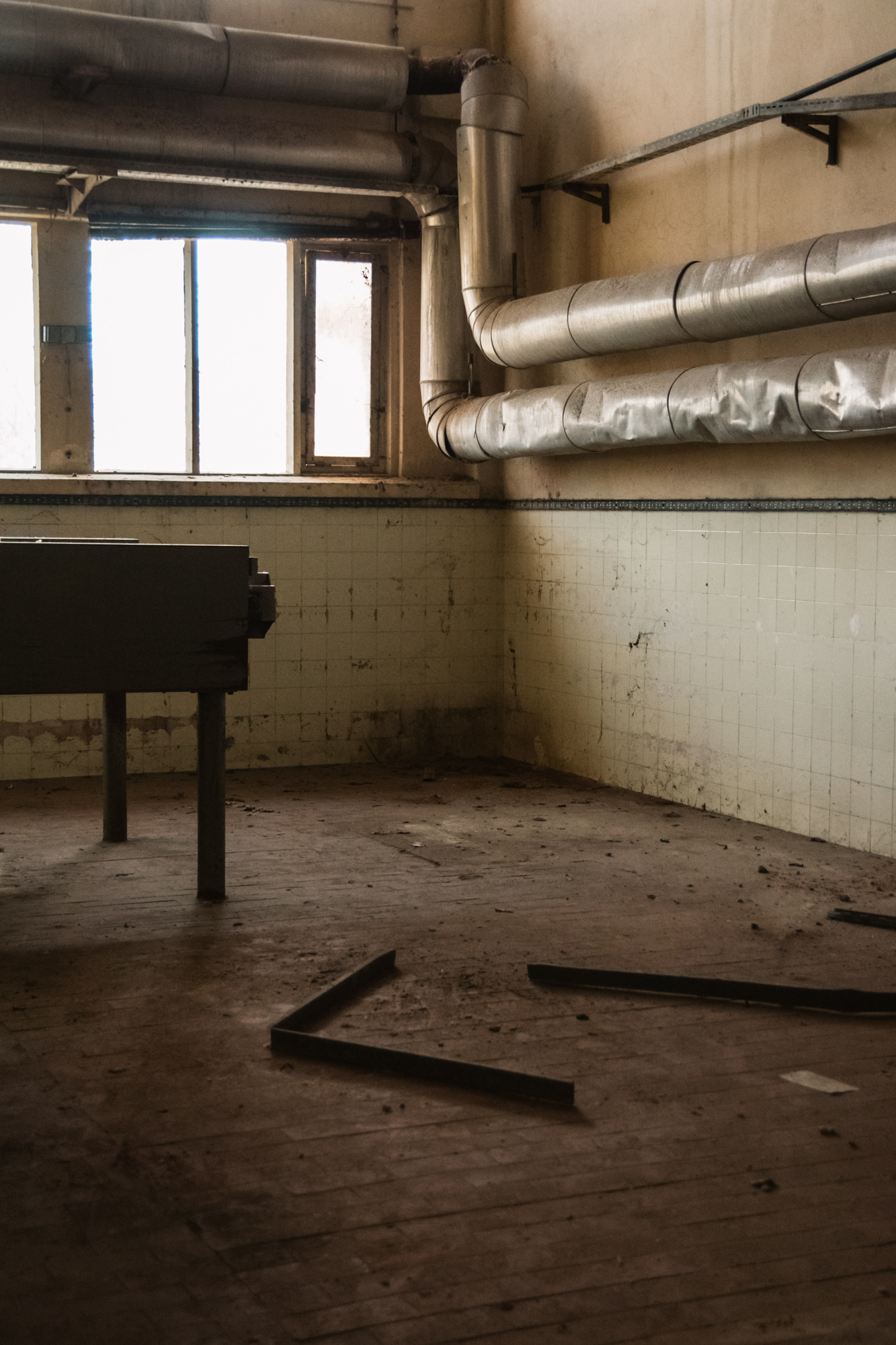Factory Dalmatinka, founded in 1951 in Sinj, Croatia, was the leading manufacturer of sewing thread in East-Central Europe. After an economic and political crisis, Yugoslavia broke up bringing along privatization and bankruptcy. Thus Dalmatinka bankrupted and closed in 2009.
Possibly the last document of the authentic state it is in, photographs by Nada Maleš are not an exclusively direct report about the contemporary situation – a state of uncertainty, understatement, a certain reality check – but they, without a doubt, possess a certain emotional charge and initiate a dialogue with the categories of memories, and oblivion.
The architectural elements and interior in the center of the photo series were/are a great example of the post-war work of architect Lavoslav Horvat, so the fact that this symbolically fraught architecture is left to perish between multiple owners seems paradoxical. But, if we consider that the crisis and the aftermath of the factory closing started a now rapid process of economic and demographic decline of the town, the inertia around the care of the industrial reliquiae reliquiarum has become much clearer. In the end, urban ruins are somewhat of an endemic species today: those rudiments of a time passed, integrated in the fabric of the city read as the “embodiments of modern paradox”, but also as aesthetic objects.
On that note, Nada interprets her creative process as an astonishing experience in which she herself was fascinated by the aesthetic value of the desolate interior. But, the reflection of a town’s destiny was not the primary agenda of this visual essay. A piercing absence of a human character in the photographs represents the largest deviation when compared to the historical representations of Dalmatinka. The space which is post-industrial, post-transitional, and subsequently post-human, emanates a certain kind of disappearance aesthetic. The tendency to emancipate becomes even clearer when looking at specific motives. With great respect towards lives and work which are inscribed in the factory space, Nada turns her focus towards fragments, such as a pile of unused thread, details of dusty machinery, inscriptions dating years in the past, a completely displaced factory restaurant, a clock stopped at 10:30, red thermos on a desk – these all seem as relicts of former human presence. In that sense, the space is re-humanized, understated moments at least partly restored; faced with the passing of time and devastating statistics, the author simultaneously affirms the past and calls to question the future.
Possibly the last document of the authentic state it is in, photographs by Nada Maleš are not an exclusively direct report about the contemporary situation – a state of uncertainty, understatement, a certain reality check – but they, without a doubt, possess a certain emotional charge and initiate a dialogue with the categories of memories, and oblivion.
The architectural elements and interior in the center of the photo series were/are a great example of the post-war work of architect Lavoslav Horvat, so the fact that this symbolically fraught architecture is left to perish between multiple owners seems paradoxical. But, if we consider that the crisis and the aftermath of the factory closing started a now rapid process of economic and demographic decline of the town, the inertia around the care of the industrial reliquiae reliquiarum has become much clearer. In the end, urban ruins are somewhat of an endemic species today: those rudiments of a time passed, integrated in the fabric of the city read as the “embodiments of modern paradox”, but also as aesthetic objects.
On that note, Nada interprets her creative process as an astonishing experience in which she herself was fascinated by the aesthetic value of the desolate interior. But, the reflection of a town’s destiny was not the primary agenda of this visual essay. A piercing absence of a human character in the photographs represents the largest deviation when compared to the historical representations of Dalmatinka. The space which is post-industrial, post-transitional, and subsequently post-human, emanates a certain kind of disappearance aesthetic. The tendency to emancipate becomes even clearer when looking at specific motives. With great respect towards lives and work which are inscribed in the factory space, Nada turns her focus towards fragments, such as a pile of unused thread, details of dusty machinery, inscriptions dating years in the past, a completely displaced factory restaurant, a clock stopped at 10:30, red thermos on a desk – these all seem as relicts of former human presence. In that sense, the space is re-humanized, understated moments at least partly restored; faced with the passing of time and devastating statistics, the author simultaneously affirms the past and calls to question the future.
Text by Jozefina Ćurković
Ongoing research about Dalmatinka can be tracked on https://www.facebook.com/dalmatinkasinj/
Ongoing research about Dalmatinka can be tracked on https://www.facebook.com/dalmatinkasinj/

